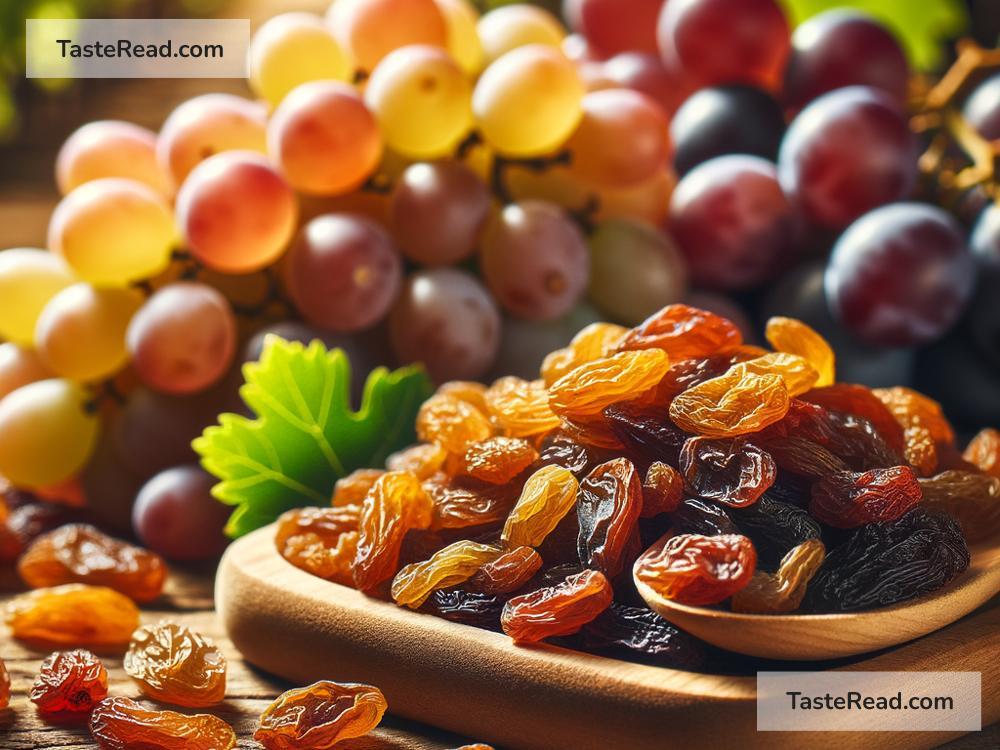The Curious Process of Turning Grapes into Raisins: A Journey of Transformation
Have you ever stopped to think about how grapes turn into raisins? It’s a fascinating process that takes an ordinary fruit and transforms it into a sweet, chewy snack loved by people all over the world. Raisins may seem simple, but their creation is a blend of nature, science, and careful attention. Let’s explore this wonderful journey, step by step, to understand how grapes become the tasty little bites we know as raisins.
Step 1: Start With the Right Grapes
The first step in making raisins is choosing the right grapes. Not all types of grapes are suitable for raisin-making. In fact, most raisins come from seedless grapes like Thompson Seedless or Sultanas. These varieties are perfect because they don’t have seeds, they taste sweet, and their skins dry easily. Farmers grow these grapes in sunny areas with warm climates, as the sun plays a key role in turning grapes into raisins later on.
Once the grapes are ripe and juicy, they are harvested from the vines. It usually happens during late summer or early autumn when the grapes are at their peak sweetness. Picking them at the right time is very important—if they are too ripe, they’ll spoil; if they aren’t ripe enough, they won’t taste as sweet when dried.
Step 2: Drying the Grapes
Now comes the magic part: drying the grapes! Drying is what turns grapes into raisins. When grapes lose most of their water content, what’s left behind is a shriveled, dense fruit packed with natural sugar and nutrients. There are several methods for drying grapes, and each one creates slightly different types of raisins.
-
Sun Drying: This is the oldest, most natural method, and it’s still widely used today. Farmers spread the grapes out on large trays or paper-covered grounds and leave them under the sun for about two to three weeks. During this time, the heat from the sun causes the water inside the grapes to evaporate, shrinking them into raisins. Sun drying gives raisins their dark, rich color but requires a lot of patience and careful monitoring to prevent spoilage.
-
Shade Drying: In some cases, farmers dry grapes in shaded areas rather than under direct sunlight. This method helps preserve a lighter color and avoids over-drying, which can make raisins too hard. Shade drying is often used for golden raisins, which have a light, golden-yellow hue.
-
Mechanical Drying: In modern factories, grapes can also be dried quickly using machines. These machines blow hot air over the grapes, drying them in just a few hours or days. This method is faster than sun drying and can be done even in areas where sunny weather isn’t reliable.
A special chemical called sulfur dioxide may be used during mechanical drying or shade drying. This helps preserve the bright color of the raisins and prevents them from turning brown. You’ll often see sulfured raisins in stores, as they have a more vibrant appearance.
Step 3: Cleaning and Sorting
Once the grapes have fully dried into raisins, they are collected and brought to factories for cleaning and sorting. Raisins can pick up dust, dirt, or bugs while drying—so it’s important to make sure they’re cleaned thoroughly before packaging. The raisins are rinsed in water and sometimes treated with oil to make them shiny and smooth.
After cleaning, machines or workers sort the raisins by size, shape, and quality. Damaged or discolored raisins are removed so only the best ones make it to the shelves. Raisins that pass inspection are packed into boxes or bags and sent off to stores around the world.
Step 4: Enjoying the Raisins!
And that’s it! Once grapes have transformed into raisins, they’re ready to be enjoyed in countless ways. Raisins are incredibly versatile—you can eat them as a snack straight out of the bag, sprinkle them over cereal or oatmeal, or bake them into cookies, cakes, and bread. They also pair beautifully with savory dishes like rice pilaf or salads.
Raisins are not just tasty; they’re also packed with nutrients. They’re rich in fiber, potassium, iron, and natural sugars, making them a healthy alternative to sugary candies. That said, since they’re concentrated in sugar, it’s best to enjoy them in moderation.
A Simple Yet Amazing Process
Turning grapes into raisins may seem like a simple process, but it’s full of interesting steps and details. From the sun’s drying power to careful sorting and cleaning, every raisin goes through quite a journey. It’s incredible to think that something as small as a raisin can tell such an amazing story of transformation.
So, the next time you pop a raisin into your mouth, take a moment to appreciate the sunny fields where the grapes grew, the farmers and workers who handled them with care, and the curious process that turned them into the sweet snack you enjoy today!


